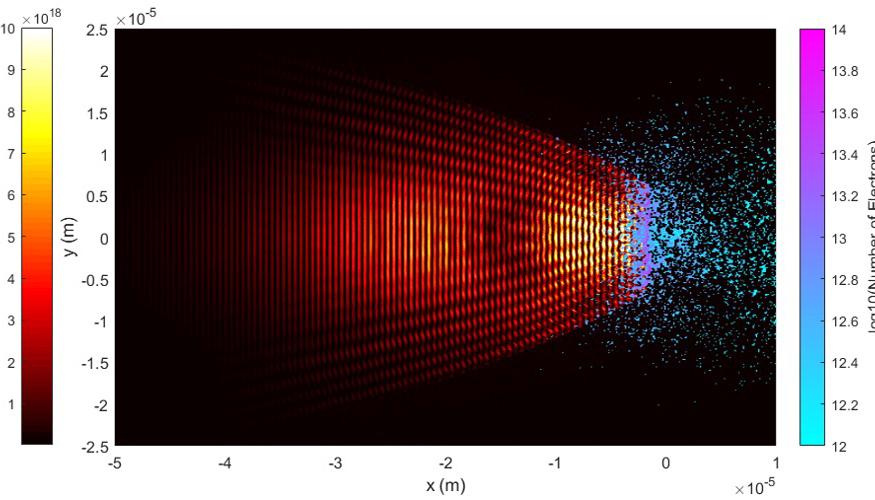Electron beams are considered to be the most precise and clean method available for welding thick sections and high value materials and are now finding new applications in additive manufacturing. Providing a method to measure the power density distribution of high power electron beams is essential for these applications. Without the ability to reliably focus and reproduce the power distribution in an electron beam, weld quality cannot be guaranteed. This problem is exacerbated by the fact the many welds are made over a period of time and with different welding operators. Further complications arise when welds are developed on one machine than transferred to a different machine for production. Methods for improving the quality of electron beam diagnostic information are required in the areas of providing higher resolution information about the profiled beam, and the ability to analyze higher power beams at high resolution.
LLNL pioneered the use of tomographic reconstruction to determine the power density of electron beams using profiles of the beam taken at a number of angles. LLNL’s earlier diagnostic consisted of a fixed number of radially oriented sensor slits and required the beam to be circled over them at a fixed known diameter to collect data. The new sensor design incorporates annular slits instead, and it removes limitations on the number of angles at which electron beam profiles can be taken. The new annular slit scanning method can profile a beam while only needing a span of only 180 deg. to acquire a full spectrum of data; this enables the sensor surface to be fabricated from a monolithic piece of refractory metal, which improves dimensional accuracy. The radial nature of the scan direction distributes the heat of the electron beam more uniformly over the surface of the slit disk than past diagnostic designs, which extends its lifetime. In addition, multiple concentric annular slits can be employed to measure the precise timing of the beam's scan velocity, while at the same time acquiring beam profiles as the beam is scanned over the slits.
LLNL's annular and concentric slit electron beam diagnostic technology provides new concepts for analyzing electron beams and changes the geometry by which the electron beam is scanned over the sensor. It has key advantages over the previously invented radial-slit designs. These advantages include: 1) Increased resolution of the computer tomographically reconstructed electron beam profile using a greater and selectable number of scan angles. 2) Linear rather than circular e-beam scanning across the sensor, which is easier for many machines to perform. 3) Smaller beam scan distances from the central point, which is easier for most electron beam machines to perform. 4) Ease of slit fabrication for more economical operation. 5) Real time and precise speed measurement of the beam motion, that allows for more accurate reconstruction of the beam profile.
Electron beam welding is used to fabricate some of the highest value-added components in the nuclear and aerospace industries, as well as high volume manufacturing for the automotive industry, and in additive manufacturing for a wide range of new product applications. Providing a method to measure the power density distribution of high power electron beams at high resolution is essential for providing quality control for all of these applications. Knowing how the electron beam parameters affect the power density distribution of the beam can be used to directly determine the focus conditions high power electron beams, can provide high resolution analysis of electron beams, can be used to transfer electron beam parameters between machines and facilities, can be used to develop better electron beam gun designs, and can be used as essential information for modeling electron beam interactions with materials.
LLNL's enhanced modified faraday cup patent portfolio, includes radial slit technology, computed tomographic reconstruction of the acquired data, and for the newer annular slit technology for higher resolution and for higher power electron beam applications. An enhanced modified faraday cup system is used for quality control on high value electron beam welds. Prototypes have been developed and tested. In addition, the next generation computed tomography software is in development.

